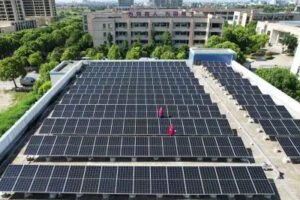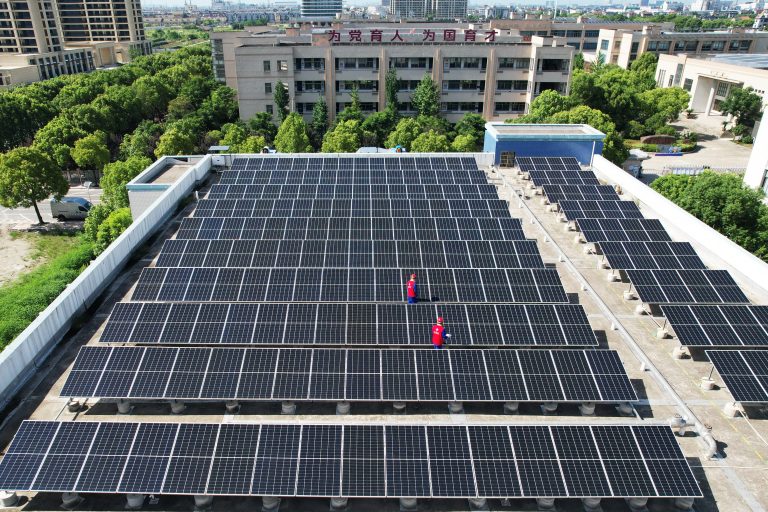[동아시아포럼] 싱가포르·중국, 지속가능금융을 위한 파트너십 강화
주요국, 녹색분류체계 개발 등 제도적 환경 조성 동아시아 국가들, 녹색금융에 대한 제도화 추진 양국 은행 등 관계기관 참여해 협력방안 등 논의
[동아시아포럼]은 EAST ASIA FORUM에서 전하는 동아시아 정책 동향을 담았습니다. EAST ASIA FORUM은 오스트레일리아 국립대학교(Australia National University) 크로퍼드 공공정책대학(Crawford School of Public Policy) 산하의 공공정책과 관련된 정치, 경제, 비즈니스, 법률, 안보, 국제관계에 대한 연구·분석 플랫폼입니다. 저희 폴리시코리아(The Policy Korea)와 영어 원문 공개 조건으로 콘텐츠 제휴가 진행 중입니다.
최근 전 세계적으로 지속가능금융(Sustainable finance)에 대한 각국 정부와 투자자들의 관심이 높아지고 있다. 그동안 지속가능금융을 선도해 온 유럽 주요국들은 지속가능금융의 공시 의무화 규정을 제정하는 등 관련 제도를 정비하는 작업을 하고 있으며, 동아시아 국가들도 지속가능금융 이니셔티브 도입 등 제도화를 추진하면서 유럽과의 격차를 줄이고 있다.

올해 4월, 싱가포르·중국 간 녹색금융TF 출범
제도적 환경은 해당 산업에 대한 명확한 가이드라인을 제공함으로써 발전의 기반을 마련하는 데 중요한 역할을 한다. 최근에는 지속가능경영(ESG경영)과 관련해 각국 정부를 중심으로 녹색분류체계를 개발하는 데 중점을 두고 있다. 현재 아세안(ASEAN)을 비롯한 아시아 14개국이 녹색분류체계를 개발 중이거나 이미 개발을 완료했다. 특히 싱가포르와 중국은 양국 간의 파트너십을 기반으로 지속가능금융에 대한 정책과 제도를 정비하고 금융 부문의 친환경·사회적 책임 경영을 강화하고 있다.
지난 4월 싱가포르 통화청(MAS)과 중국 인민은행은 중국-싱가포르 간 녹색금융 태스크포스(China–Singapore Green Finance TF)를 출범했다. 양국은 이를 통해 지속가능금융 시장의 연계, 녹색분류체계의 공유 등을 추진하고 있으며 그 결과가 동아시아 전역으로 확대되기를 희망하고 있다. 해당 프로젝트에는 싱가포르 개발은행(DBS) 등 싱가포르에 기반을 둔 상업은행을 비롯해 중국의 국부펀드와 지역은행 등 공공과 민간 부문 전문가들이 참여하며 태스크포스는 지속가능금융에 대한 지식과 정보를 공유하고 실행방안을 논의하는 기능을 수행한다.
특히 양국의 이니셔티브는 친환경 기술에 대한 투자를 촉진하고 탄소 배출을 절감하기 위해 지속가능금융 상품의 운용 절차와 규제를 간소화하는 데 중점을 두고 있다. 이와 관련해 싱가포르 거래소와 중국국제금융공사(CICC)는 공동 워킹그룹을 구성해 지속가능금융과 관련한 양국의 채권시장 연동을 추진하는 한편, 녹색·전환채권을 공동 개발함으로써 양국의 투자자들이 해당 채권에 제한 없이 접근하고 투자할 수 있도록 할 계획이다. 이를 위해서는 싱가포르의 암호화폐 거래소인 메타버스 녹색거래소와 중국의 베이징 녹색거래소 간의 협력이 무엇보다 중요하다. 양국 거래소는 지속가능금융을 촉진하기 위해 새로운 아이디어와 기술을 신속히 채택하고 탄소배출권(corbon credits)과 함께 사용하는 디지털 녹색채권(digital green bonds)의 시범 운영 등을 추진할 예정이다.
융합과 전문성에 기반한 양국의 지속가능금융 협력 프로젝트는 공공과 민간 부문에서 구체적인 금융 상품과 기술 등에 대한 협력을 촉진할 것으로 기대된다. 이는 신뢰롭고 포괄적인 저탄소 비즈니스 활동으로의 전환을 지원하기 위한 자본을 확보함으로써 지속가능 경제 활동을 촉진하는 데 기여할 것으로 보인다.
양국 녹색분류체계와 녹색채권 간 연계 추진
장기적으로 지속가능금융에 대한 투자는 녹색 인프라나 친환경 기반 시설에 대한 투자를 확대하는 동시에 기후 변화 관련 의무를 이행할 수 있는 기회를 제공한다. 이와 함께 상대적으로 친환경 정책이나 사회적 책임에 반하는 투자를 감소시킴으로써 금융시장 전반에 규제 리스크를 줄이는 역할을 한다. 나아가 녹색채권의 발행을 촉진해 친환경 부문의 자금 조달 메커니즘을 강화함으로써 양국의 지속가능금융 시장을 활성화하는 데 기여할 것으로 예상된다.
이와 관련해 양국의 태스크포스는 중국의 녹색채권 카탈로그를 싱가포르의 녹색분류체계와 연계하는 방안을 추진 중이다. 중국의 녹색채권 카탈로그는 투자자들에게 녹색채권이 어떤 프로젝트에 투자되고 투자 옵션이 무엇인지에 관한 정보를 제공하는데, 이를 싱가포르의 녹색분류체계와 연동함으로써 그린워싱(위장환경주의)에 대응해 지속가능금융의 자격 기준, 평가 방법 등을 명시한 세부 규정을 적용할 수 있을 것으로 보인다.
특히 싱가포르와 중국 간 파트너십은 글로벌 금융시장의 복잡성 문제에 대응한다는 점에서 의미가 있다. 글로벌 시장에서 국가나 지역별로 채택된 규정과 기준들은 비즈니스 활동에 대한 효과적인 관리와 감독에 제한을 초래하고 나아가 불균형을 야기할 가능성이 있다. 싱가포르 통화금융청과 중국 인민은행은 양국 중앙은행과 재무부 대표로 구성된 협의체인 ‘국제 지속가능금융 플랫폼(IPSF)’을 통해 이같은 현안에 대응하고 있다.
IPSF의 운영위원회과 녹색분류체계 워킹그룹은 지역적 특성과 ESG경영으로의 전환 요소를 고려해 전 세계적으로 적용할 수 있는 분류체계와 표준을 공동 개발하는 데 주력하고 있다. IPSF는 유럽의 지속가능금융 분류체계와 중국의 녹색채권 승인 프로젝트 카탈로그 간의 호환성을 확보하기 위해 공통 분류체계(Common Ground Taxonomy)의 개발을 추진하고 있다. 이와 관련해 양국은 상호 호환성을 확보하기 위해 분류체계의 설계 단계부터 협의에 들어갔다. 분류체계의 적용에 앞서 유사한 경제 활동을 정의하기 위해서는 업종 분류체계부터 조율하는 작업이 필요하기 때문이다.
국가 간 호환성 확보 주력, 향후 확장 가능성
양국의 파트너십이 극복해야 할 과제도 있다. 예컨대 노동자 권리, 윤리경영 등 지속가능금융의 사회적 부문을 어떻게 분류체계에 포함할지, 또 그 범위는 어디까지인지를 명확히 해야 한다. 또한 현재 ESG경영으로 전환 중인 비즈니스 활동을 어떻게 분류할지에 대한 고민도 필요하다. 세계 주요국들은 이같이 전환 지점에 있는 과도기적 경제 활동을 ESG경영과 구별하면서도 녹색경영으로의 전환 필요성을 강조하기 위한 방안으로 ‘황색 분류체계’를 도입하고 있다. 다만 현재 싱가포르는 황색 분류체계를 적용하고 있으나 중국은 채택하지 않고 있다.
지속가능금융의 분류체계를 도입하는 작업은 전 세계적으로 지속가능금융 시장의 명확성을 제고함으로써 산업 발전에 핵심적인 역할을 할 것으로 기대된다. 하지만 이를 위해서는 각국 정부와 관계기관들이 지속가능금융의 정의와 녹색·전환 비즈니스 활동을 평가하는 방법 등에 대한 이해를 공유하는 것이 선행돼야 한다.
이러한 측면에서 중국과 싱가포르 간 파트너십은 글로벌 금융시장에서 중요한 의미를 갖는다. 현재 아세안이 자체적으로 지속가능금융 분류체계를 개발했지만 이는 회원국들을 위한 참고 사례일 뿐 강제적인 가이드라인이 아니다. 따라서 싱가포르와 중국이 추진하는 지속가능금융 이니셔티브는 양국 금융시장과 분류체계의 호환성 확보에서 나아가 향후 아세안과 그 회원국을 비롯해 아시아 내 다른 국가들로 확장할 가능성이 있다.
Singapore and China join forces with new green finance taskforce
Sustainable finance garners significant attention from global investors and policymakers. In recent years, Europe has led the way in regulating sustainable finance. But East Asia is catching up as sustainable investment surges due to recent government initiatives and regulations.

The regulatory landscape is pivotal, providing clarity for markets to flourish. Countries like Singapore and China have embraced new sustainable finance regulations, guiding the financial sector toward eco-friendly and socially responsible ventures. Fourteen Asian states and ASEAN have developed or are in the process of developing green taxonomies. China established its Green Bond Catalogue in 2015, while Singapore is currently finalising its forthcoming green taxonomy.
Building upon their sustainable finance policies and regulations, Singapore and China have elevated their collaborative efforts. In April 2023, the Monetary Authority of Singapore and the People’s Bank of China unveiled the China–Singapore Green Finance Taskforce — a seminal stride aimed at amplifying bilateral cooperation in green and transition finance across Singapore, China and East Asia. Comprising a public–private consortium of expert members including commercial banks, such as Singapore-based DBS, sovereign wealth funds and Chinese regional banks, the taskforce functions as a conduit for the exchange of best practices and knowledge.
This initiative aims to boost investment in green technology and promote decarbonisation by streamlining the issuance of sustainable financial instruments. The Singapore Exchange and China International Capital Corporation will jointly establish a workstream with the goal of fortifying connectivity within the sustainability bond market between the two nations. This endeavour encompasses the mutual issuance of — and access to — green and transition bond products across China and Singapore.
Collaborative efforts between the Metaverse Green Exchange and China Beijing Green Exchange are also integral to this facilitation. Their cooperative workstream will harness technology to expedite the adoption of sustainable finance, including piloting digital green bonds accompanied by carbon credits.
The hybrid and expert-based character of the taskforce should facilitate greater public–private sector collaboration in China and Singapore on concrete products and instruments. This will catalyse capital flows to support a credible and inclusive transition to low-carbon business activities.
Investing in sustainable finance products offers substantial long-term benefits. It provides investors with an opportunity to invest in infrastructure while also meeting their climate commitments. It also reduces any regulatory risks associated with investments that are not aligned with the transition. Facilitating the issuance of green bonds for sustainable projects and bolstering financing mechanisms are poised to invigorate the sustainable finance market in the region.
The taskforce will also collaborate on Singapore’s green taxonomies and China’s Green Bond Catalogue. To combat greenwashing and to infuse greater clarity into sustainable finance markets, novel regulations, such as taxonomies, have adopted a prescriptive stance on what qualifies as ‘sustainable’ and outlined methodologies for its evaluation.
But the multifarious regulatory standards adopted across different jurisdictions can engender disparities, posing challenges to the effective oversight of global financial activities. Singapore and China’s collaboration holds importance in the face of complexities introduced by financial globalisation.
The Monetary Authority of Singapore and the People’s Bank of China are collaborating through the International Platform on Sustainable Finance (IPSF) — a discussion forum comprising representatives from national central banks and finance ministries. IPSF’s Steering Committee and Taxonomy Workgroup are dedicated to jointly developing globally harmonised sustainable finance alignment tools, considering local nuances and transition factors. IPSF has worked on a Common Ground Taxonomy to establish interoperability between the EU Sustainable Finance Taxonomy and China’s Green Bond Endorsed Project Catalogue.
Likewise, China and Singapore are striving for interoperability between their respective taxonomies. To achieve interoperability, it is important to align certain design aspects. These aspects include having similar objectives and utilising comparable sector classification systems to define economic activities.
The cooperation will need to overcome certain hurdles. For instance, clarifying whether and to what extent social aspects will be part of the taxonomy. There is also the question of how to classify transitional business activities. The amber classification serves to distinguish transitional activities from wholly sustainable ones, but signals their relevance for the green transition to investors. The colour differentiation approach is being adopted by Singapore but not by China.
The bilateral endeavour undertaken by China and Singapore bears considerable significance. Sustainable finance taxonomies play a crucial role in bringing clarity to global sustainable finance markets. But their efficacy hinges on regulators collaborating to develop a shared understanding of definitions and how to measure green and transition activities.
The initiative taken by China and Singapore could be expanded to involve a wider set of countries in Asia through existing regional institutions. ASEAN has established its own Taxonomy for Sustainable Finance, but the ASEAN taxonomy is a non-binding instrument that serves as a template for member states’ respective national taxonomies. The bilateral cooperation between China and Singapore could, in the future, also involve ASEAN and its member states.
원문의 저자는 스테파니 샤커러(Stefanie Schacherer)싱가포르 경영대학교(Singapore Management University) 법학과 조교수입니다.




























